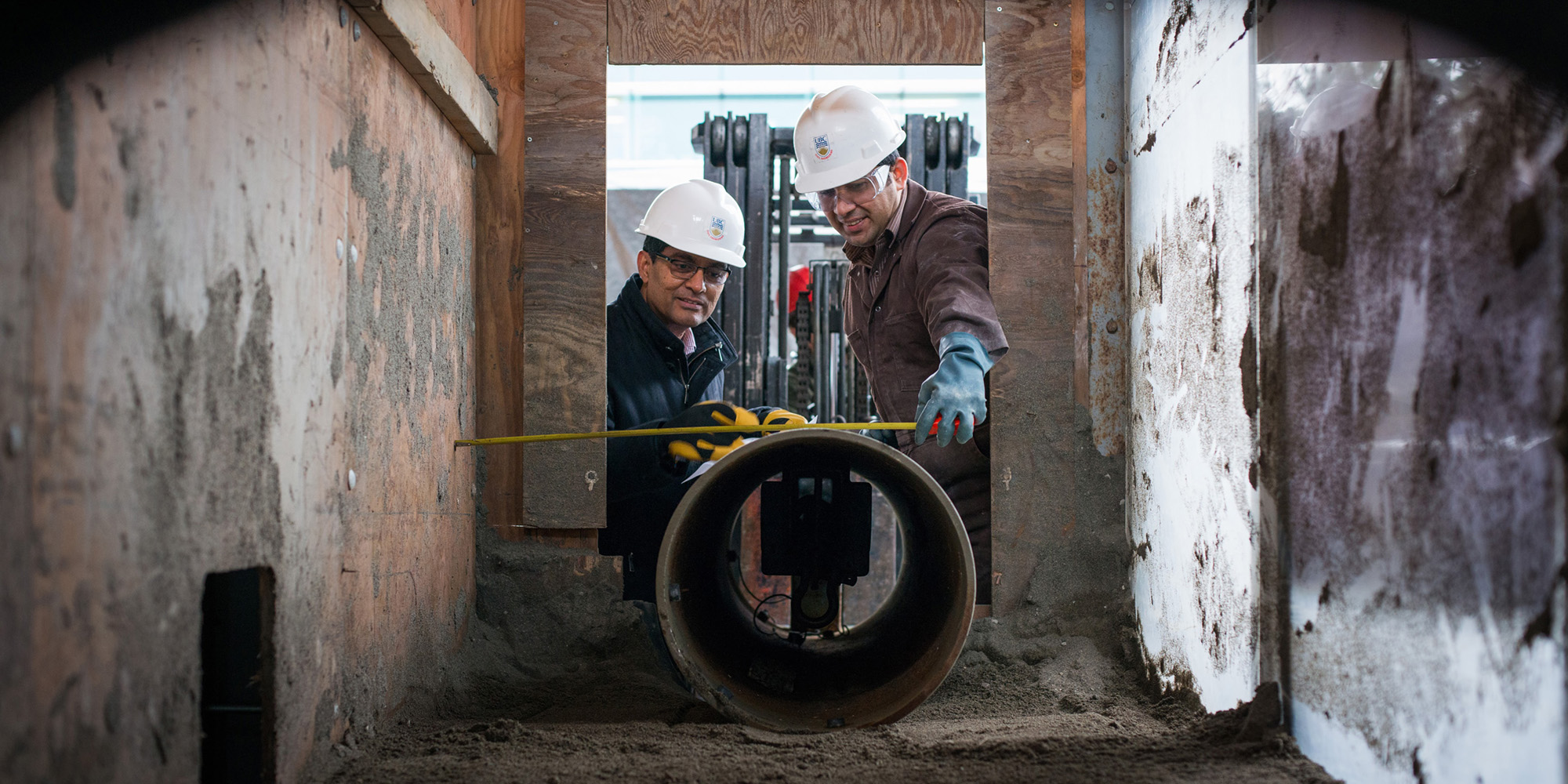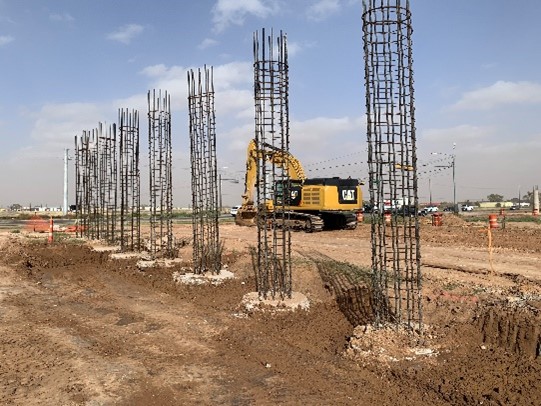Civil Geotechnical Engineering Providers for Commercial and Residential Projects
Wiki Article
A Thorough Exam of the Solutions Offered by Consulting Engineers in the Area of Geotechnical Design: From Site Investigation to Task Execution
Consulting designers in geotechnical design play a critical duty in the effective execution of building and construction projects, starting with thorough site examinations that reveal vital subsurface problems. Their proficiency reaches soil property evaluations, ecological effect evaluations, and the careful surveillance of project application, making certain alignment with safety and security and sustainability criteria. Each phase is interlinked, presenting distinct challenges and factors to consider that can considerably affect project outcomes. As we explore these crucial solutions, it ends up being apparent that comprehending their ramifications is crucial for efficient job management and risk mitigation. What intricacies exist within each of these phases that require our attention?Value of Geotechnical Engineering
Geotechnical engineering is an essential technique that underpins the safety and security and sustainability of civil infrastructure tasks. By understanding the mechanical actions of dirt and rock products, geotechnical designers assess the viability of sites for different constructions, consisting of buildings, bridges, and dams. This basic analysis ensures that frameworks can stand up to environmental elements and tons without experiencing failure.The relevance of geotechnical engineering extends past mere structural safety and security; it likewise includes ecological stewardship. Proper geotechnical analyses add to decreasing the environmental effect of building. Through careful examination of dirt homes and groundwater problems, designers can develop foundations and maintaining structures that minimize dangers such as erosion and landslides, promoting lasting stability.
In addition, geotechnical design plays an important role in task cost monitoring. geotechnical works. By identifying possible problems early in the design stage, designers can advise suitable remedies, hence preventing expensive hold-ups and redesigns during building. This proactive method not only enhances task performance however additionally substantially lowers risks linked with unpredicted website conditions
Website Examination Strategies
Reliable website examination techniques are essential for collecting precise information concerning subsurface conditions before construction. These techniques assist in the understanding of the geological and hydrological environment, which is critical for making certain the security and safety and security of recommended frameworks.Common methods utilized in site investigations include borehole drilling, which allows designers to remove dirt examples at numerous depths, offering insights right into stratification and product kinds. Additionally, geophysical studies, such as seismic refraction and electric resistivity, offer non-invasive ways to assess subsurface attributes over bigger locations. These methods can help determine abnormalities without extensive excavation.
Test pits are an additional important strategy, supplying straight monitoring of dirt layers and allowing in-situ screening. geotechnical works. This strategy is particularly beneficial for shallow excavations and can assist examine groundwater degrees. In addition, cone infiltration tests (CPT) are progressively utilized, as they provide constant profiles of soil resistance, which assists in determining dirt strength and layering.
Each of these methods plays a crucial function in establishing a comprehensive understanding of site problems, allowing consulting designers to make educated choices and referrals throughout the project lifecycle. Accurate data collection during the website examination stage is crucial to mitigating risks and making certain effective job implementation.
Soil Residential Or Commercial Property Evaluation

The evaluation procedure commonly entails a combination of lab examinations and field examinations. our website Trick properties such as shear stamina, compressibility, permeability, and moisture web content are examined to establish the dirt's viability for building and construction purposes. Common tests, including the Atterberg limits, Proctor compaction, and triaxial shear examinations, are typically used to gather data on dirt behavior.
In addition to these examinations, in-situ methods such as the Standard Penetration Test (SPT) and Cone Penetration Examination (CPT) offer useful insights into dirt stratigraphy and thickness. The outcomes of these analyses notify engineers concerning potential challenges, such as soil liquefaction or negotiation, allowing them to design appropriate mitigation strategies.
Environmental Impact Examination
Environmental impact assessment plays a crucial duty in the planning and execution of design jobs, especially in geotechnical engineering. This process involves evaluating the prospective ecological effects of suggested projects on dirt, water, air top quality, and bordering environments. Consulting engineers use various methods, including website evaluations, modeling, and area research studies, to identify and evaluate these effects.The analysis typically starts with the identification of baseline environmental problems, which works as a recommendation for forecasting potential changes. Engineers analyze aspects such as erosion, groundwater contamination, and environment disruption, making sure that all pertinent ecological policies and guidelines are complied with throughout the project lifecycle. Stakeholder involvement is also an important part of the assessment procedure, as it cultivates communication between project designers, local neighborhoods, and governing bodies.
Additionally, mitigation approaches are developed to address recognized influences, allowing engineers to propose choices or alterations to project styles that boost sustainability. This aggressive approach not just reduces adverse impacts on the atmosphere yet likewise promotes public depend on and compliance with ecological regulation. Eventually, reliable environmental influence evaluation strengthens the total stability and feasibility of geotechnical design jobs, sustaining liable development techniques.
Task Implementation and Surveillance

Surveillance is a necessary part of job implementation. Designers make use of different techniques, such as instrumentation and area examinations, to examine dirt actions and architectural actions in real-time. This continuous tracking allows the recognition of any deviations from expected performance, enabling prompt treatments to mitigate dangers.
Moreover, getting in touch with designers preserve next page open interaction with professionals and stakeholders throughout the procedure. Routine site examinations and report card make certain that all events are educated concerning job condition and any arising issues. By cultivating cooperation and transparency, seeking advice from designers assist in a much more reliable application procedure, thereby improving task end results.
Ultimately, efficient job execution and tracking not only promote safety and security and quality requirements however likewise add to the total success of geotechnical tasks, ensuring they fulfill their designated functions sustainably and properly.

Verdict
In conclusion, the function of seeking advice from designers in geotechnical design incorporates a crucial series of solutions that make certain task success. Eventually, the multifaceted payments of seeking advice from engineers are important in dealing with the complexities of geotechnical challenges in modern engineering projects.Report this wiki page